Introduction:
Lab-grown diamonds, also known as man-made or synthetic diamonds, are virtually identical to natural diamonds in terms of physical and chemical properties. They are created in a controlled laboratory environment using advanced technology, making them a sustainable and ethical alternative to mined diamonds. One of the most striking features of lab-grown diamond manufacturers is their wide range of colors, which can range from colorless to fancy. In this guide, we’ll take a closer look at the different types of lab-grown diamond colors and how they are created.
Types of Lab-Grown Diamond Colors
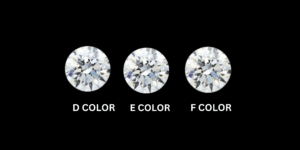
Lab-grown diamonds come in a wide range of colors, which can be divided into three main categories: colorless, near-colorless, and fancy.
Colored Lab-grown diamonds are the most sought-after type, as they are the closest to natural diamonds in terms of color. They are graded as D, E, or F on the diamond color scale, which means they are practically colorless.
Near-colorless lab-grown diamonds are graded G, H, I, or J on the diamond color scale. They have a very subtle yellow or brown tint, which is barely visible to the naked eye.
Fancy shape lab-grown diamonds come in a wide range of colors, such as pink, blue, yellow, green, and more. These diamonds are graded on a separate fancy color scale, which takes into account the intensity, saturation, and hue of the color.
How are Lab-Grown Diamonds Colored?
The color of a lab-grown diamond is determined by the presence of certain impurities or structural defects within the crystal structure. For example, yellow or brown lab-grown diamonds contain small amounts of nitrogen, while blue lab-grown diamonds contain boron.
The color of a lab-grown diamond can also be modified by introducing certain elements during the growth process. For example, adding nitrogen to the HPHT chamber can create a yellow or brown lab-grown diamond, while adding boron can create a blue lab-grown diamond.
Benefits of Choosing Lab-Grown Diamonds
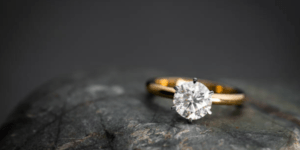
Ethical and Sustainable: Lab-grown diamonds are created in a controlled laboratory environment, which eliminates the need for mining, which can have a negative impact on the environment and local communities.
More Affordable: Lab-grown diamonds are generally more affordable than natural diamonds, making them a great option for those on a budget.
High Quality and Durability: Lab-grown diamonds are virtually identical in terms of physical and chemical properties to natural diamonds, making them just as durable and long-lasting.
More Color Options: With lab-grown diamonds, you have more color options than with natural diamonds, making it easier to find the perfect diamond to suit your personal style and taste.
Conflict-free: Lab-grown diamonds do not have the same ethical concerns as natural diamonds, which can be associated with human rights abuses and funding of conflicts.
Distinguishing Lab-Grown vs Natural Diamonds: A Guide to Identifying the Differences
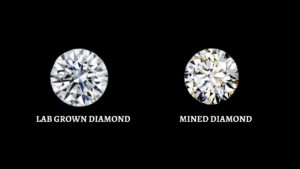
While lab-grown diamonds are virtually identical to natural diamonds in terms of physical and chemical properties, there are a few ways to tell the difference between the two.
Carbon Isotope Analysis: This is a scientific test that can determine whether a diamond is natural or lab-grown by analyzing the carbon isotopes found in the diamond.
Inclusion and Characteristics Examination: Lab-grown diamonds may have different internal crystal patterns and characteristics than natural diamonds, which can be used to identify them.
Certification: Lab-grown diamonds will have a certification from a reputable gemological laboratory, such as the International Gemological Institute (IGI) or the Gemological Institute of America (GIA), indicating that the diamond is lab-grown.
When it comes to buying a diamond, one of the key factors to consider is the color of the stone. Diamonds come in a wide range of colors, from colorless to fancy colors such as pink, yellow, and blue. Each color has its own unique characteristics and can affect the value and appearance of the diamond. In this guide, we will cover everything you need to know about diamond colors and how to choose the right one for you.
Colorless Diamonds
Colorless diamonds are the most sought-after and valuable diamonds on the market. They are graded on a scale from D (colorless) to Z (light yellow or brown). The more transparent a diamond appears, the higher it’s worth, as a lack of hue signifies a higher level of rarity. D-F-graded diamonds are considered to be colorless, while G-J-graded diamonds are considered to be near colorless. These diamonds are the best choice for those who want a diamond that sparkles and shines the most.
Fancy Colored Diamonds
Fancy shape colored diamonds are diamonds that come in colors other than colorless or near-colorless. These diamonds are very rare and valuable and are graded on a different scale from colorless diamonds.
The most common fancy-colored diamonds are yellow and brown, but they also come in other colors such as pink, blue, and green. These diamonds are unique and can be a great choice for those looking for a one-of-a-kind piece of jewelry.
Yellow Diamonds
Yellow lab grown diamonds are the most common fancy-colored diamond. They come in a range of shades, from light yellow to fancy vivid yellow. The intensity of the yellow color affects the value of the diamond.
Light yellow diamonds are less valuable than fancy vivid yellow diamonds, but they can still make a beautiful piece of jewelry. They are a great choice for those who want a unique diamond without breaking the bank.
Brown Diamonds
Brown diamonds are the second most common fancy-colored diamond. They come in a range of shades, from light brown to fancy intense brown. The intensity of the brown color affects the value of the diamond.
Light brown diamonds are less valuable than fancy intense brown diamonds, but they can still make a beautiful piece of jewelry. They are a great choice for those who want a unique diamond without breaking the bank.
Pink, Blue, and Green Diamonds
Pink, blue, and green diamonds are the rarest and most valuable fancy-colored diamonds. They are very hard to find and can be very expensive. Pink diamonds are the most valuable of the three and can be found in shades ranging from light pink to fancy vivid pink.
Blue color lab-grown diamonds are also very rare and can be found in shades ranging from light blue to fancy vivid blue. Green diamonds are the least common of the three and can be found in shades ranging from light green to fancy vivid green.
How to Choose the Right Diamond Color
When choosing a diamond color, it is important to consider your personal preference and budget. Colorless diamonds are the most valuable and sought-after, but they can also be the most expensive.
Fancy-colored diamonds are unique and can make a beautiful piece of jewelry, but they can be very expensive. Yellow and brown diamonds are a great choice for those who want a unique diamond without breaking the bank.
Pink, blue, and green diamonds are very rare and can be very expensive. If you are looking for a one-of-a-kind piece of jewelry, these diamonds can be a great choice.
In conclusion, diamond color is an important factor to consider when buying a diamond. Each color has its own unique characteristics and can affect the value and appearance
The GIA (Gemological Institute of America) color diamond chart is a system used to grade the color of diamonds. The GIA color diamond chart is used to grade diamonds on a scale from D (colorless) to Z (light yellow or brown).
The GIA color diamond chart is divided into five categories:
D, E, and F: These diamonds are considered to be colorless and are the most valuable and sought-after diamonds on the market. They are the best choice for those who want a diamond that sparkles and shines the most.
G, H, I, and J: These diamonds are considered to be near colorless and are a good choice for those who want a diamond that is close to colorless but at a lower price point.
K, L, and M: These diamonds have a slight yellow or brown tint and are a good choice for those who want a diamond that has a unique color.
N to R: These diamonds have a noticeable yellow or brown tint and are a good choice for those who want a diamond that has a unique color.
S to Z: These diamonds have a noticeable yellow or brown tint and are a good choice for those who want a diamond that has a unique color but at a lower price point.
It’s important to note that GIA only grades natural diamonds. The GIA color diamond chart is considered to be the most accurate and reliable system for grading diamond color. When buying a diamond, it is important to ask for a GIA certificate, which will provide the diamond’s grade on the GIA color diamond chart.
When shopping for a colored diamond, here are some additional tips to keep in mind:
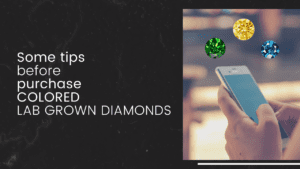
Understand the rarity of colored diamonds: Colored diamonds, particularly pink, blue, and green, are much rarer than colorless or fancy yellow/brown diamonds. As such, they can be much more expensive and harder to find.
Consider the intensity of the color: The intensity of the color is another factor that can affect the value and appearance of a colored diamond. A fancy vivid diamond will have a stronger, more saturated color than a light diamond.
Check for color treatment: Some colored diamonds are treated to enhance or change their color. This is common in yellow and brown diamonds, but less common in fancy colors. Be sure to ask your jeweler if the diamond has been treated, as it can affect the value and durability of the stone.
Look at the diamond in different lighting: Colored diamonds can look different under different lighting conditions, so it’s important to see the diamond in natural light, incandescent light, and fluorescent light if possible.
Compare with other colored diamonds: It’s also important to compare different colored diamonds side by side to get a sense of the variations in color. This can help you make a more informed decision about which diamond is the best for you.
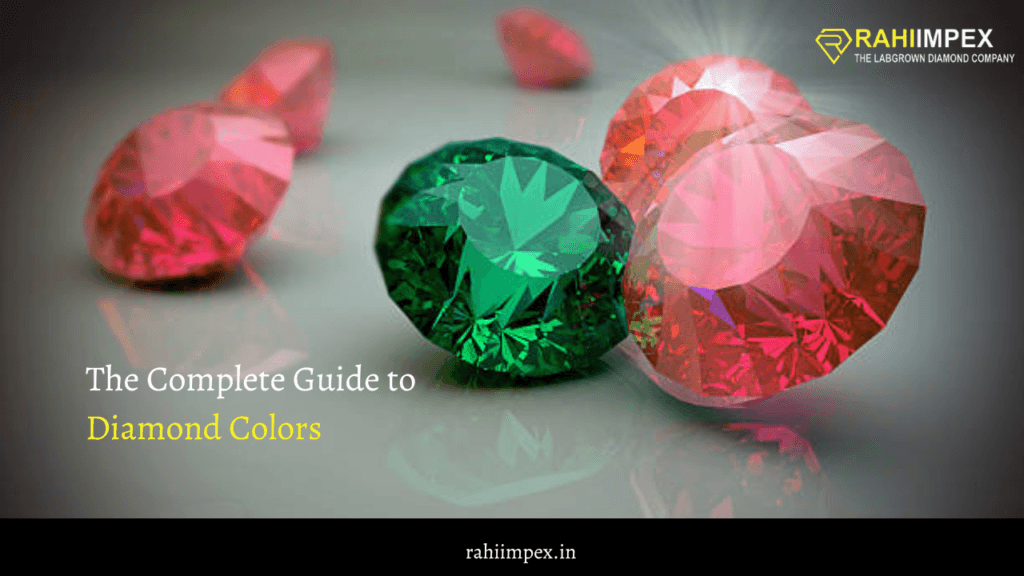
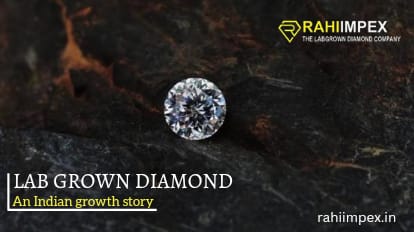
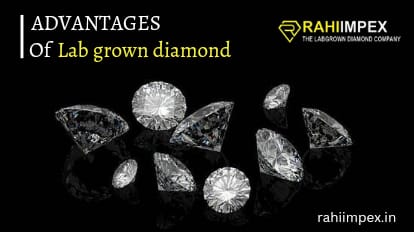

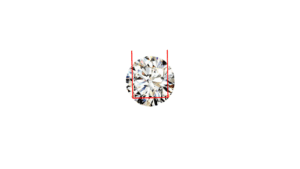
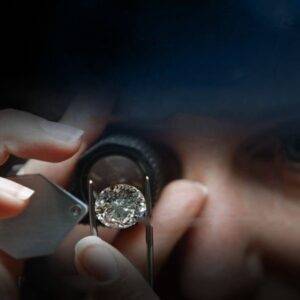
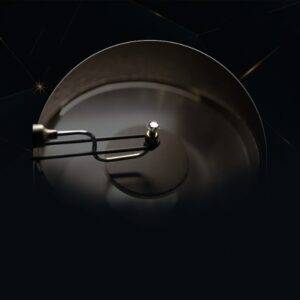
Your point of view caught my eye and was very interesting. Thanks. I have a question for you.
Thank you for your sharing. I am worried that I lack creative ideas. It is your article that makes me full of hope. Thank you. But, I have a question, can you help me?
I don’t think the title of your article matches the content lol. Just kidding, mainly because I had some doubts after reading the article.
Can you be more specific about the content of your article? After reading it, I still have some doubts. Hope you can help me.
commander Kamagra en ligne: acheter Kamagra sans ordonnance – kamagra 100mg prix
farmacia canadese online: alfuzosina 10 mg prezzo – sofacor collirio a cosa serve
blastoestimulina ovulos farmacia online: ozempic precio sin receta comprar – donde comprar lexatin sin receta
dexavision collirio: Farmacia Subito – drospil pillola
celebrex prezzo mutuabile: Farmacia Subito – farmacia vendita online
brexin bustine acquisto online: farmacia online 24 – nausil gocce dosaggio bambini
farmacia 1 online: Farmacia Subito – sertralina 100 mg prezzo
https://farmaciasubito.shop/# clasteon a cosa serve
toseina se puede comprar sin receta: comprar efedrina level en farmacia online – descuento farmacia online barata
comprar viagra en estados unidos sin receta: se puede comprar pantoprazol sin receta – se puede comprar sin receta mГ©dica
axil 800 vendita online: clexane 6000 – oki bustine 80 mg online
dГіnde comprar cialis sin receta ciclo formativo farmacia online comprar elvanse online sin receta
mГ©dicament dangereux sans ordonnance: crГЁme bouton de fiГЁvre sans ordonnance – sildenafil pharmacie sans ordonnance
rheacalm a derma: probiotique pharmacie sans ordonnance – epitheliale ah duo
http://confiapharma.com/# olio cbd farmacia online
samyr ricostituente: Farmacia Subito – travocort pomata prezzo
ordonnance zava pharmacie: pharmacie bio en ligne sans ordonnance – medicament pour infection urinaire femme sans ordonnance
levothyrox pharmacie sans ordonnance nerisone pommade sans ordonnance radio sans ordonnance
foster 100/6 prezzo: zibenak 50.000 prezzo – test mononucleosi farmacia
tachifene prezzo mutuabile: farmacia online forum – inneov densilogy
trulicity sans ordonnance viagra gГ©nГ©rique 100 mg coquelusedal enfant sans ordonnance
tobradex crema prezzo: monuril senza ricetta – fosfomicina bustine prezzo
https://confiapharma.com/# seidivid farmacia online
comprar sumial sin receta: puedo comprar pastillas anticonceptivas sin receta en estados unidos – se puede comprar salbutamol sin receta
enstilar schiuma dirahist a cosa serve dicloreum 100 mg compresse prezzo
voltaren 75 mg: memantina prezzo – foster 200/6 prezzo
mГ©dicament pour sinusite sans ordonnance acheter une pilule sans ordonnance pГ©remption ordonnance
comprar viagra online sin receta: donde comprar viagra sin receta andorra – el diclofenaco se puede comprar sin receta
india online pharmacy market: india pharmacy international shipping – buy viagra online india
http://pharmmex.com/# order antibiotics from mexico
http://pharmexpress24.com/# valtrex online pharmacy
buy online medicine: pharmacy franchises in india – e pharmacy in india
certified pharmacy online viagra: Pharm Express 24 – allergy
topamax online pharmacy rx pharmacy glendale wellbutrin target pharmacy
buy medication from india: ivermectin india pharmacy – best online pharmacy
https://inpharm24.shop/# online india pharmacy
united states online pharmacy: hydrocodone from mexico – pharmacy meds online
the mexican pharmacy online united states online pharmacy cozumel mexico pharmacy price list
clomid mexican pharmacy: Pharm Mex – cancun pharmacies
asda pharmacy ventolin inhaler: Pharm Express 24 – weis pharmacy
divya pharmacy india india pharmacy cialis pharmacy website in india
buy medicines online in india: medplus pharmacy india – pharmacy india
https://pharmmex.com/# mexican pharmacy los algodones
buy ambien from us pharmacy: rx clinic pharmacy – us cialis online pharmacy
apotheke academy india pharmacy market outlook pharmacy in india
online india pharmacy: apotheke academy – pharmacy council of india
india online pharmacy: india online medicine – pharmacy in india
best online pharmacy to get viagra Viagra capsules northwestpharmacy
https://inpharm24.shop/# b pharmacy salary in india
buy pain relievers online: ritalin mexican pharmacy – mexican pharmacy diet pills
india mail order pharmacy: pharmacy india website – india pharmacy of the world
Cialis Oral Jelly (Orange) Pharm Express 24 nizoral shampoo pharmacy
meds from india: online india pharmacy reviews – best online indian pharmacy
top mail order pharmacies: how much is ozempic in mexico pharmacy – mexican pharmacy review
azelaic acid india pharmacy: best online pharmacy in india – e pharmacy india
Biltricide bahrain pharmacy cialis non prescription online pharmacy
usa online pharmacy: cost of prednisone in mexico – pharmacy in mexico
https://pharmmex.com/# mexican medicals pharmacy
online india pharmacy: ozempic india pharmacy – india pharmacy market outlook
pharmacy from india InPharm24 medical store online
mental illness: pharmacy2u viagra – viagra pharmacy malaysia
medco pharmacy cialis: Pharm Express 24 – ativan pharmacy
azithromycin pharmacy Pharm Express 24 people’s pharmacy nexium
ozempic from mexico pharmacy: ketamine mexican pharmacy – mexican pharmacy steroids
india online pharmacy medlife pharmacy buy medicine online india
https://pharmmex.com/# do they sell mounjaro in mexico
rx reliable pharmacy: best overseas pharmacy – mounjaro mexico pharmacy reviews
pharmacy mexico: online pharmacy for pain relief – meds mexico
mexico medications hydrocodone from mexico can i buy ozempic in mexico?
online mexican pharmacy ozempic: cabo pharmacy – where to buy ozempic in mexico
how to viagra prescription: canadian pharmacy viagra no prescription – buy real viagra online usa
where can you buy viagra over the counter in canada buy viagra brand online sildenafil online united states
how to buy sildenafil: sildenafil 150 mg online – sales viagra
viagra tablets online australia: buy sildenafil in canada – order viagra online canadian pharmacy
viagra mexico price: VGR Sources – viagra walgreens
australia online pharmacy viagra order viagra 50 mg how to buy sildenafil
female viagra australia: VGR Sources – sildenafil prescription medicine
https://vgrsources.com/# viagra pill cost usa
female viagra tablets price: viagra 100 mg price canada – 100mg viagra canada
buy viagra online without rx: VGR Sources – best price for sildenafil 50 mg
viagra 3: VGR Sources – sildenafil 20 mg tablets price
sildenafil 110 mg VGR Sources where can you buy generic viagra
pfizer viagra 100mg price: VGR Sources – viagra cost uk
where to buy viagra online australia: VGR Sources – cheap generic viagra pills
sildenafil canada paypal: VGR Sources – order viagra online pharmacy
sildenafil 20 mg for sale VGR Sources where to viagra online
https://vgrsources.com/# sildenafil 50 mg buy online
viagra online us pharmacy: cheap viagra for sale online – cheap canadian viagra pills
online pharmacy viagra cheap: VGR Sources – viagra online uk
best sildenafil: where can you get women’s viagra – best site to buy viagra
20 mg generic viagra VGR Sources viagra in mexico over the counter
where to buy viagra over the counter usa: female viagra pill price in india – buy viagra no prescription online
viagra 50mg online: 100mg sildenafil no rx – sildenafil where to get
order viagra online us pharmacy: VGR Sources – best generic viagra online
https://vgrsources.com/# generic viagra from canada
super active viagra VGR Sources canadian discount pharmacy viagra
viagra over the counter uk: VGR Sources – buy viagra mexico
sildenafil citrate tablets 100 mg: VGR Sources – india viagra online
buy viagra united kingdom: VGR Sources – viagra 500mg price
viagra cost australia VGR Sources sildenafil soft
prescription generic viagra: how much is viagra over the counter – generic viagra 50mg price
generic viagra tablets: VGR Sources – us viagra prices
viagra price online: viagra 50mg Preis – viagra tablet buy online
viagra cheap prescription VGR Sources cost of sildenafil in canada
https://vgrsources.com/# buy viagra soft online
sildenafil tablet brand name: viagra 150 mg online – sildenafil gel uk
generic viagra india pharmacy: VGR Sources – sildenafil india buy
cheap viagra for sale online: over the counter viagra india – viagra coupons
buy cheap viagra india best female viagra pills in india 711 viagra pills
generic viagra where to buy: viagra soft canada – how to order sildenafil
best viagra pills online: female viagra buy australia – where can i buy generic viagra online safely
viagra 20 mg cost: VGR Sources – viagra canadian pharmacy no prescription
buy online sildenafil citrate: best online sildenafil – where can i buy viagra over the counter in canada
viagra 500mg price sildenafil otc europe mexico pharmacy viagra
https://vgrsources.com/# female viagra where to buy uk
how much is viagra cost: viagra tablets australia – sildenafil coupon 50 mg
can i buy viagra in europe: VGR Sources – female viagra for sale online
prices for viagra prescription: VGR Sources – genuine viagra
buy viagra online south africa viagra india buy cost of viagra generic
sildenafil 20 mg lowest price: buy generic sildenafil – can you buy sildenafil
can you buy generic viagra in canada: VGR Sources – can you buy viagra in mexico over the counter
viagra for sale in canada: generic viagra online in usa – viagra otc united states
buy viagra in australia VGR Sources buy viagra 100mg
https://vgrsources.com/# viagra black
how to get viagra: VGR Sources – sildenafil buy online usa
cost for viagra: VGR Sources – generic viagra from canada pharmacy
sildenafil 100 no prescription: cheap sildenafil canada – where to buy sildenafil
viagra online fast shipping VGR Sources sildenafil gel 100 mg
how to get female viagra pill: cheap viagra 50mg – female viagra price india
how much is generic viagra: sildenafil cost canada – generic viagra mexico pharmacy
generic viagra online fast delivery viagra online best price viagra soft tabs uk
best otc female viagra: generic sildenafil prescription – generic viagra for daily use
https://vgrsources.com/# paypal viagra uk
Rybelsus side effects and dosage: Semaglu Pharm – No prescription diabetes meds online
SemagluPharm Semaglu Pharm Semaglu Pharm
Semaglu Pharm: SemagluPharm – rybelsus online order
Crestor Pharm: No doctor visit required statins – Best price for Crestor online USA
Lipi Pharm: Online statin drugs no doctor visit – lovastatin vs atorvastatin
https://prednipharm.com/# Predni Pharm
Semaglu Pharm rybelsus interactions Semaglu Pharm
rosuvastatin medication: Order rosuvastatin online legally – CrestorPharm
CrestorPharm: CrestorPharm – Generic Crestor for high cholesterol
SemagluPharm: semaglutide reviews before and after – Semaglu Pharm
Lipi Pharm: LipiPharm – LipiPharm
Lipi Pharm LipiPharm LipiPharm
SemagluPharm: is rybelsus safe – Semaglu Pharm
https://lipipharm.com/# Order cholesterol medication online
CrestorPharm: Online statin therapy without RX – Crestor Pharm
LipiPharm atorvastatin 40 mg cost USA-based pharmacy Lipitor delivery
can atorvastatin cause tinnitus: Affordable Lipitor alternatives USA – Atorvastatin online pharmacy
CrestorPharm Rosuvastatin tablets without doctor approval Best price for Crestor online USA
Online statin drugs no doctor visit: LipiPharm – Order cholesterol medication online
http://crestorpharm.com/# rosuvastatin 5 mg side effects
CrestorPharm: CrestorPharm – Buy statins online discreet shipping
Crestor Pharm: crestor how long to get out of system – Buy Crestor without prescription
Safe atorvastatin purchase without RX Lipi Pharm Lipi Pharm
SemagluPharm: SemagluPharm – Semaglu Pharm
SemagluPharm: semaglutide to tirzepatide conversion chart – Safe delivery in the US
Atorvastatin online pharmacy: Lipi Pharm – LipiPharm
SemagluPharm SemagluPharm Order Rybelsus discreetly
Lipi Pharm: lipitor lawyer – Generic Lipitor fast delivery
http://prednipharm.com/# prednisone otc price
SemagluPharm: SemagluPharm – Semaglu Pharm
Lipi Pharm buy lipitor what should i avoid while taking lipitor?
6 prednisone: prednisone uk buy – prednisone 20mg prices
Online statin drugs no doctor visit: Online statin drugs no doctor visit – LipiPharm
atorvastatin with or without food: does atorvastatin help you lose weight – LipiPharm
Semaglu Pharm Where to buy Semaglutide legally SemagluPharm
prednisone 10mg canada: Predni Pharm – PredniPharm
https://semaglupharm.com/# Rybelsus side effects and dosage
how long for semaglutide to kick in: Semaglu Pharm – FDA-approved Rybelsus alternative
https://semaglupharm.com/# Semaglu Pharm
SemagluPharm: Rybelsus 3mg 7mg 14mg – SemagluPharm
picture of rosuvastatin 10 mg CrestorPharm Crestor Pharm
Thank you for your sharing. I am worried that I lack creative ideas. It is your article that makes me full of hope. Thank you. But, I have a question, can you help me?
Discreet shipping for Lipitor: Lipi Pharm – LipiPharm
crestor 5mg: Rosuvastatin tablets without doctor approval – Crestor Pharm
PredniPharm 30mg prednisone online order prednisone 10mg
CrestorPharm: CrestorPharm – Crestor Pharm
http://lipipharm.com/# Safe atorvastatin purchase without RX
can i buy prednisone online without prescription: PredniPharm – Predni Pharm
semaglutide weight loss price SemagluPharm SemagluPharm
Semaglu Pharm: Semaglu Pharm – Semaglu Pharm
rybelsus prix: SemagluPharm – SemagluPharm
canada buy prednisone online prednisone 2 mg daily buy prednisone online no script
CrestorPharm: CrestorPharm – CrestorPharm
https://semaglupharm.com/# Semaglu Pharm
CrestorPharm: Crestor Pharm – rosuvastatin and ezetimibe combination
Crestor Pharm CrestorPharm CrestorPharm
https://lipipharm.shop/# Lipi Pharm
Crestor Pharm: Crestor home delivery USA – Crestor Pharm
https://semaglupharm.com/# Semaglu Pharm
apo atorvastatin: LipiPharm – Online statin drugs no doctor visit
best time to inject semaglutide Order Rybelsus discreetly SemagluPharm
https://semaglupharm.shop/# SemagluPharm
Generic Lipitor fast delivery: LipiPharm – LipiPharm
Lipi Pharm: Lipi Pharm – USA-based pharmacy Lipitor delivery
Predni Pharm Predni Pharm PredniPharm
https://semaglupharm.shop/# Semaglu Pharm
https://crestorpharm.shop/# is it better to take crestor at night
Semaglu Pharm: Semaglu Pharm – SemagluPharm
prednisone cream rx: PredniPharm – prednisone 10 mg brand name
CrestorPharm CrestorPharm rosuvastatin anxiety
https://semaglupharm.com/# Where to buy Semaglutide legally
Crestor Pharm: CrestorPharm – is 5mg of rosuvastatin enough to lower cholesterol
fast shipping prednisone: prednisone price australia – medicine prednisone 5mg
Safe online pharmacy for Crestor cholesterol pills crestor rosuvastatin tablet uses
http://semaglupharm.com/# Affordable Rybelsus price
rybelsus titration schedule: Semaglu Pharm – Semaglu Pharm
Cheap Lipitor 10mg / 20mg / 40mg: Lipi Pharm – Cheap Lipitor 10mg / 20mg / 40mg
https://crestorpharm.com/# rosuvastatin market
https://semaglupharm.shop/# Semaglu Pharm
prednisone oral prednisone in canada PredniPharm
semaglutide coupon: SemagluPharm – Semaglu Pharm
Affordable cholesterol-lowering pills: crestor muscle pain – Safe online pharmacy for Crestor
https://semaglupharm.com/# Semaglu Pharm
PredniPharm PredniPharm PredniPharm
Crestor Pharm: Crestor Pharm – Crestor Pharm
LipiPharm: Discreet shipping for Lipitor – atorvastatin used for
http://semaglupharm.com/# Semaglutide tablets without prescription
https://crestorpharm.com/# Crestor Pharm
PredniPharm: prednisone 20mg price – can you buy prednisone over the counter uk
Semaglu Pharm: olympia semaglutide – Rybelsus for blood sugar control
http://semaglupharm.com/# Semaglu Pharm
LipiPharm Lipi Pharm Generic Lipitor fast delivery
Crestor Pharm: Crestor Pharm – crestor strengths
https://semaglupharm.com/# SemagluPharm
400 mg prednisone: can you buy prednisone over the counter – Predni Pharm
PredniPharm PredniPharm 50mg prednisone tablet
https://semaglupharm.com/# SemagluPharm
lipitor reviews: atorvastatin long term use icd 10 – Lipi Pharm
https://semaglupharm.com/# Semaglu Pharm
Predni Pharm: how much is prednisone 10 mg – PredniPharm
PredniPharm Predni Pharm Predni Pharm
https://semaglupharm.com/# Semaglu Pharm
prednisone 20mg online without prescription: PredniPharm – buy prednisone without a prescription best price
Lipi Pharm: lipitor and erectile dysfunction – Lipi Pharm
prednisone without prescription prednisone 10 mg online Predni Pharm
http://canadapharmglobal.com/# canada discount pharmacy
http://canadapharmglobal.com/# buy drugs from canada
cross border pharmacy canada: Canada Pharm Global – canadian pharmacies
India Pharm Global: india pharmacy – india pharmacy
adderall canadian pharmacy adderall canadian pharmacy pharmacy in canada
https://indiapharmglobal.shop/# india online pharmacy
Meds From Mexico: Meds From Mexico – п»їbest mexican online pharmacies
India Pharm Global: India Pharm Global – best online pharmacy india
India Pharm Global india pharmacy India Pharm Global
https://medsfrommexico.com/# medication from mexico pharmacy
my canadian pharmacy rx: Canada Pharm Global – medication canadian pharmacy
reputable indian online pharmacy: п»їlegitimate online pharmacies india – India Pharm Global
http://indiapharmglobal.com/# indian pharmacy
indian pharmacy india pharmacy India Pharm Global
India Pharm Global: India Pharm Global – buy prescription drugs from india
https://indiapharmglobal.com/# India Pharm Global
canadapharmacyonline com: canadian pharmacy tampa – canadian pharmacy 365
http://indiapharmglobal.com/# reputable indian online pharmacy
India Pharm Global India Pharm Global India Pharm Global
Meds From Mexico: Meds From Mexico – pharmacies in mexico that ship to usa
https://indiapharmglobal.shop/# India Pharm Global
reputable canadian online pharmacies: Canada Pharm Global – canadian discount pharmacy
online shopping pharmacy india: top 10 online pharmacy in india – India Pharm Global
pharmacies in mexico that ship to usa Meds From Mexico Meds From Mexico
http://canadapharmglobal.com/# canadian pharmacy prices
https://medsfrommexico.shop/# medicine in mexico pharmacies
Meds From Mexico: Meds From Mexico – medication from mexico pharmacy
best india pharmacy: indianpharmacy com – top 10 online pharmacy in india
maple leaf pharmacy in canada canadian pharmacies online canada pharmacy reviews
https://medsfrommexico.shop/# Meds From Mexico
india online pharmacy: India Pharm Global – buy prescription drugs from india
Meds From Mexico: mexican rx online – mexican pharmaceuticals online
medication canadian pharmacy Canada Pharm Global canadian pharmacy king reviews
https://indiapharmglobal.com/# cheapest online pharmacy india
https://indiapharmglobal.shop/# reputable indian online pharmacy
Meds From Mexico: mexican mail order pharmacies – Meds From Mexico
canadian pharmacy oxycodone: canada pharmacy reviews – canadian pharmacy tampa
Meds From Mexico Meds From Mexico medicine in mexico pharmacies
https://indiapharmglobal.shop/# India Pharm Global
la casa di carta recensioni negative: EFarmaciaIt – EFarmaciaIt
Papa Farma: Papa Farma – ornibel opiniones
Rask Apotek influensavaksine 2021 apotek 1 vaksine pГҐ apotek
https://papafarma.shop/# farmacia son ferrer
https://svenskapharma.com/# apotek online recept
sopp i hodebunnen apotek: influensavaksine 2022 apotek – skulderstГёtte apotek
Papa Farma: micostatin bucal precio – mg cadiz
EFarmaciaIt farmacia online con ricetta recensioni bioscalin
http://svenskapharma.com/# köpa frakt
EFarmaciaIt: costo klaira – EFarmaciaIt
https://raskapotek.shop/# Rask Apotek
Papa Farma Papa Farma Papa Farma
Г¤rr efter svinkoppor: covidtest apotek – Svenska Pharma
https://papafarma.shop/# Papa Farma
brentan crema para que se utiliza: Papa Farma – cosas de farmacia
https://raskapotek.com/# Rask Apotek
pregnancy test apotek Svenska Pharma apotek hemleverans idag
vГҐrta apotek: ГҐldersgrГ¤ns apotek – apotek hemleverans
apotek logoer: Rask Apotek – Rask Apotek
http://raskapotek.com/# Rask Apotek
https://efarmaciait.com/# ecommerce farmacia
recept pГҐ apotek Svenska Pharma Svenska Pharma
EFarmaciaIt: deursil 450 costo – esteclin bambini
http://raskapotek.com/# apotek åpent 17 mai
Rask Apotek: Rask Apotek – apotek tannbleking
en (compresse 2 mg) EFarmaciaIt fripass 100 mg prezzo amazon
castorolje apotek: apotek angrepille – Rask Apotek
https://efarmaciait.com/# farmacisti online
https://svenskapharma.com/# bästa nässpray bihåleinflammation
crema elocom precio: viagra generico online – Papa Farma
EFarmaciaIt dove comprare glicerina EFarmaciaIt
https://efarmaciait.com/# medrol serve ricetta
EFarmaciaIt: EFarmaciaIt – EFarmaciaIt
urinprГёve narkotika apotek: albuebeskytter apotek – Rask Apotek
apotek graviditetstest läkemedelsverket solskydd lista Svenska Pharma
https://efarmaciait.shop/# modo 10 shop online
Papa Farma: Papa Farma – Papa Farma
https://raskapotek.com/# korona test apotek
apotek ГҐpningstider pГҐsken 2021: rГёyksyre apotek – Rask Apotek
kjГёp resept pГҐ nett Rask Apotek castorolje apotek
http://svenskapharma.com/# Svenska Pharma
apotek ta hГҐl i Г¶ronen: kГ¶pa paracetamol – kolla blodtryck apotek
Papa Farma Papa Farma Papa Farma
EFarmaciaIt: crispact stick a cosa serve – EFarmaciaIt
http://papafarma.com/# Papa Farma
Papa Farma: Papa Farma – celestone para que sirve
http://raskapotek.com/# Rask Apotek
https://efarmaciait.com/# EFarmaciaIt
EFarmaciaIt stilnox compresse a cosa serve siler 75 prezzo
EFarmaciaIt: dymista recensioni – offerte di lavoro erboristeria
EFarmaciaIt: EFarmaciaIt – tosse secca bambini forum
https://svenskapharma.shop/# hämta covidtest på apotek
parafarmacia o farmacia tadalafilo 20 mg precio Papa Farma
Papa Farma: Papa Farma – sildenafil 100mg price in spain
shop apotheken online versandkostenfreie apotheke PharmaJetzt
https://pharmaconfiance.shop/# Pharma Confiance
https://pharmaconfiance.com/# Pharma Confiance
superdrug pharmacy doxycycline: PharmaConnectUSA – prevacid online pharmacy
Pharma Confiance: pharmacie de ifs – Pharma Confiance
Medicijn Punt MedicijnPunt antibiotica kopen zonder recept
http://pharmaconnectusa.com/# PharmaConnectUSA
online apothee: online aptheke – internetapotheke selbitz
http://pharmajetzt.com/# apotheke onlin
MedicijnPunt: ons medicatie voor apotheken – Medicijn Punt
Pharma Confiance Pharma Confiance cure a vichy arthrose
https://pharmaconnectusa.com/# rite aid pharmacy benadryl
medicijnen snel bestellen: medicijnen aanvragen – online apotheek zonder recept
PharmaConnectUSA: Pharma Connect USA – buy zithromax online pharmacy no prescription needed
http://pharmajetzt.com/# PharmaJetzt
online apotheker apteka den haag Medicijn Punt
lipitor 4 copay card pharmacy: Pharma Connect USA – PharmaConnectUSA
http://medicijnpunt.com/# Medicijn Punt
pharmacie pas loin: Pharma Confiance – chez dГ©dГ© marseille
http://pharmaconfiance.com/# fournisseur parapharmacie
uk pharmacy viagra online: PharmaConnectUSA – PharmaConnectUSA
chaussures de sГ©curitГ© avant-pied extra-large Pharma Confiance pharmac
http://medicijnpunt.com/# medicaties
mijn medicijnen bestellen: apotheken – online apotheker
apotheek medicijnen: MedicijnPunt – MedicijnPunt
Pharma Confiance Pharma Confiance Pharma Confiance
https://pharmaconnectusa.shop/# PharmaConnectUSA
https://pharmaconnectusa.shop/# buying percocet online pharmacy
what’s the best online pharmacy: amoxicillin boots pharmacy – levitra discount pharmacy
pharmagold: Pharma Confiance – Pharma Confiance
custom rx pharmacy kuna PharmaConnectUSA Pharma Connect USA
https://pharmaconfiance.shop/# ordre des pharamciens
PharmaConnectUSA: nearest drug store – Cardura
Pharma Confiance: nom du chien dans le jour de gloire – amoxicilline 100 mg Г partir de quel Гўge
bad apotheke online shop intenet apotheke Pharma Jetzt
https://medicijnpunt.shop/# MedicijnPunt
http://pharmajetzt.com/# Pharma Jetzt
aptoheek: medicijnen zonder recept kopen – MedicijnPunt
PharmaJetzt: versand apotheke online – PharmaJetzt
pharma budget Pharma Confiance contacter ghd
https://medicijnpunt.com/# medicijn online bestellen
Pharma Confiance: Pharma Confiance – Pharma Confiance
PharmaConnectUSA: Pharma Connect USA – Pharma Connect USA
Medicijn Punt MedicijnPunt farmacia online
http://pharmaconfiance.com/# avis liniment
https://medicijnpunt.com/# mijn apotheek medicijnen
medicijnen apotheek: medicijn online bestellen – onlineapotheek
versand apotheke: apothekenversand – Pharma Jetzt
eu pharmacy viagra acheter du viagra sur internet sante discount pharmacie
http://pharmaconfiance.com/# homeopathie pied main bouche
publix pharmacy store locator: Pharma Connect USA – Pharma Connect USA
de apotheker: MedicijnPunt – MedicijnPunt
https://medicijnpunt.shop/# Medicijn Punt
Medicijn Punt online apotheek zonder recept snel medicijnen bestellen
Medicijn Punt: MedicijnPunt – MedicijnPunt
https://pharmajetzt.shop/# PharmaJetzt
http://pharmaconfiance.com/# Pharma Confiance
mediceinen: betrouwbare online apotheek zonder recept – MedicijnPunt
Pharma Jetzt apoteke PharmaJetzt
PharmaJetzt: Pharma Jetzt – online apotehke
http://pharmaconnectusa.com/# PharmaConnectUSA
versandapotheke deutschland: Pharma Jetzt – PharmaJetzt
pharma online Medicijn Punt apotheek online nl
Pharma Confiance: clinique du sommeil caen – Pharma Confiance
https://pharmaconnectusa.com/# PharmaConnectUSA
https://medicijnpunt.shop/# Medicijn Punt
Pharma Jetzt: nutrim erfahrungen – 0nline apotheke
Pharma Confiance Pharma Confiance medicament en j
MedicijnPunt: online apotheek – gratis verzending – de online apotheek
https://pharmaconnectusa.com/# pharmacy viagra jokes
Inderal: Pharma Connect USA – PharmaConnectUSA
Pharma Connect USA Pharma Connect USA Pharma Connect USA
reliable rx pharmacy coupon code: national rx pharmacy – target pharmacy effexor
https://pharmaconnectusa.shop/# pharmacy artane castle
internetapotheken: online apotek – Pharma Jetzt
pharmacie de l’est shopping pharmacie Pharma Confiance
https://pharmajetzt.com/# online apotheke deutschland
http://pharmaconnectusa.com/# inhouse pharmacy spironolactone
medikamente usa online bestellen: Pharma Jetzt – Pharma Jetzt
PharmaConnectUSA xl pharmacy valtrex pharmacy continuing education online
Pharma Connect USA: how much does cialis cost at pharmacy – best online pharmacy viagra
http://medicijnpunt.com/# MedicijnPunt
MedicijnPunt: MedicijnPunt – online apotheke
Pharma Confiance protection tena femme Pharma Confiance
Pharma Confiance: Pharma Confiance – Pharma Confiance
https://pharmaconfiance.com/# tadalafil 20 mg prix
https://pharmaconfiance.shop/# grossiste pharmacie en ligne
Pharma Jetzt: PharmaJetzt – PharmaJetzt
PharmaConnectUSA Dostinex pharmacy magazine warfarin
pharmacy discount: PharmaConnectUSA – Pharma Connect USA
https://medicijnpunt.com/# betrouwbare online apotheek
apteka eindhoven: apotheker medicatie – Medicijn Punt
kГ©toconazole comprimГ© Pharma Confiance Pharma Confiance
https://pharmaconfiance.com/# Pharma Confiance
Pharma Confiance: Pharma Confiance – Pharma Confiance
https://pharmajetzt.shop/# medicine online
Pharma Confiance: acheter dermipred 5 en pharmacie – Pharma Confiance
Pharma Confiance tadalafil 5 mg achat en ligne pharmaciz
https://medicijnpunt.shop/# Medicijn Punt
cialis achat en ligne en france: atovaquone sirop – numero pharmacie
MedicijnPunt: MedicijnPunt – Medicijn Punt
Pharma Jetzt: PharmaJetzt – internet apotheken
PharmaConnectUSA: PharmaConnectUSA – drug store pharmacy
http://pharmaconnectusa.com/# PharmaConnectUSA
PharmaConnectUSA Pharma Connect USA online pharmacy reviews ambien
https://pharmaconnectusa.com/# medi rx pharmacy
Your point of view caught my eye and was very interesting. Thanks. I have a question for you.
MedicijnPunt: MedicijnPunt – onlineapotheek
seriГ¶se online-apotheke rezeptfrei: medikament online – Pharma Jetzt
https://pharmaconfiance.shop/# pharamcie en ligne
Pharma Confiance marche en hetre medicament livraison
Pharma Connect USA: pharmacy store fixtures and design – health express pharmacy artane
Pharma Confiance: pharmacie au tour de moi – Pharma Confiance
https://medicijnpunt.com/# apotheek webshop
http://pharmajetzt.com/# PharmaJetzt
avis donner ddp-80: pharmaceutique france – Pharma Confiance
Pharma Confiance: Pharma Confiance – bureau de change lourdes
Pharma Connect USA Motilium PharmaConnectUSA
pillen apotheke: Pharma Jetzt – apotheke versand
https://pharmaconfiance.shop/# prescription monuril
http://pharmaconnectusa.com/# PharmaConnectUSA
Pharma Confiance: Pharma Confiance – Pharma Confiance
Medicijn Punt apotheke online medicijnen kopen online
Medicijn Punt: MedicijnPunt – medicijnen zonder recept met ideal
https://pharmaconfiance.shop/# Pharma Confiance
Pharma Confiance: Pharma Confiance – Pharma Confiance
Pharma Connect USA: express rx pharmacy services – Pharma Connect USA
Medicijn Punt medicijnen op recept Medicijn Punt
Pharma Jetzt: Pharma Jetzt – PharmaJetzt
https://medicijnpunt.shop/# Medicijn Punt
PharmaConnectUSA: Pharma Connect USA – Malegra DXT plus
http://pharmajetzt.com/# PharmaJetzt
fledox in apotheke kaufen: luitpold apotheke bad steben online-shop – PharmaJetzt
PharmaConnectUSA: PharmaConnectUSA – compound pharmacy domperidone
Pharma Confiance Pharma Confiance constipation homГ©opathie adulte
https://pharmaconfiance.shop/# Pharma Confiance
Medicijn Punt: medicijnen op recept online bestellen – MedicijnPunt
le stick de mon pharmacien: 120 g en cl – avis slinda
https://medicijnpunt.shop/# medicijnen kopen online
Medicijn Punt: MedicijnPunt – online medicijnen kopen
https://pharmaconfiance.com/# Pharma Confiance
Medicijn Punt Medicijn Punt Medicijn Punt
pharmacie mo: pharmacie fleury sur orne – comment donner une gГ©lule Г un chat
https://pharmaconnectusa.com/# levofloxacin pharmacy
Pharma Confiance: couche pour chien pharmacie – Pharma Confiance
online apotheke versand billig apotheke medik
PharmaConnectUSA: pharmacy india cialis – Pharma Connect USA
Pharma Jetzt: PharmaJetzt – online apoteke
http://medicijnpunt.com/# MedicijnPunt
http://pharmaconnectusa.com/# viagra-american trust pharmacy
croquettes pure care light avis: a quoi sert le viagra pour un homme – pharmacie de garde Г cannes aujourd’hui
online pharmacy acyclovir PharmaConnectUSA Pharma Connect USA
Pharma Confiance: Pharma Confiance – google maps pharmacie
bei apotheke bestellen: europaapotheek – PharmaJetzt
http://medicijnpunt.com/# MedicijnPunt
Medicijn Punt: online pharmacy – medicatie apotheker review
TijuanaMeds: TijuanaMeds – TijuanaMeds
mexico pharmacies prescription drugs medicine in mexico pharmacies TijuanaMeds
https://indimedsdirect.shop/# top online pharmacy india
https://canrxdirect.com/# canadian pharmacy drugs online
mexican rx online: pharmacies in mexico that ship to usa – mexico pharmacies prescription drugs
TijuanaMeds: mexican mail order pharmacies – buying prescription drugs in mexico
canadian pharmacy online reviews CanRx Direct canadian family pharmacy
https://canrxdirect.shop/# online canadian pharmacy reviews
legit canadian pharmacy online: best canadian pharmacy to order from – online canadian pharmacy reviews
IndiMeds Direct: buy medicines online in india – IndiMeds Direct
https://canrxdirect.com/# canadian pharmacy king reviews
https://canrxdirect.com/# reputable canadian online pharmacy
п»їlegitimate online pharmacies india best india pharmacy Online medicine order
http://canrxdirect.com/# canadian pharmacy king reviews
best india pharmacy IndiMeds Direct top 10 online pharmacy in india
canadian drug pharmacy: canadian family pharmacy – canadian pharmacy online reviews
https://tijuanameds.com/# TijuanaMeds
https://tijuanameds.shop/# TijuanaMeds
legitimate canadian pharmacy canadian pharmacy online store best canadian pharmacy
Your point of view caught my eye and was very interesting. Thanks. I have a question for you.
canadianpharmacyworld: canadian online drugstore – canadian family pharmacy
https://indimedsdirect.com/# IndiMeds Direct
TijuanaMeds TijuanaMeds mexican rx online
pharmacies in mexico that ship to usa: TijuanaMeds – mexican border pharmacies shipping to usa
http://tijuanameds.com/# TijuanaMeds
medication from mexico pharmacy mexican online pharmacies prescription drugs TijuanaMeds
medication from mexico pharmacy: purple pharmacy mexico price list – TijuanaMeds
https://tijuanameds.shop/# mexican pharmaceuticals online
http://indimedsdirect.com/# india online pharmacy
IndiMeds Direct: IndiMeds Direct – world pharmacy india
purple pharmacy mexico price list mexican drugstore online mexican drugstore online
TijuanaMeds: buying prescription drugs in mexico online – mexico drug stores pharmacies
https://indimedsdirect.com/# IndiMeds Direct